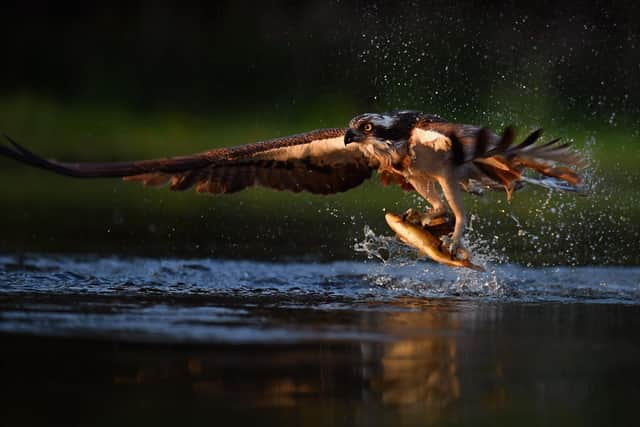Scotland faces an extinction crisis. But 30% of its territory can be protected for nature by 2030 by working with landowners – Dr Deborah Long
A major shift is underway around our understanding of the natural world in Scotland. Here, species have declined by 15 per cent on average since 1994; one in nine are at risk of national extinction. This comes on top of large historic losses. Scotland ranks 212th out of 240 countries and territories on how intact its biodiversity remains.
Nature underpins our economies and lives, and the costs of continuing on this damaging trajectory are huge. Scotland is home to countless natural treasures, but the evidence shows we could have so much more nature enriching our lives.
Advertisement
Hide AdAdvertisement
Hide AdLater this year we expect the Scottish Government to bring forward a natural environment Bill, to set nature restoration targets and, among other things, place in statute the commitment to protect at least 30 per cent of Scotland’s land and sea for nature by 2030. The government is currently seeking views on legislative proposals to achieve this.


Nature-friendly farming
The key form of site-based conservation to date in Scotland is protected areas, our best and most celebrated places for nature, identified as supporting nationally or internationally important wildlife. These sites receive legal protection from development or land use that could damage the special wildlife or features, and currently cover 18 per cent of Scotland’s land. We know that well-managed protected areas are effective in supporting wildlife and that they deliver many other benefits, like improving flood mitigation, storing carbon and connecting people with nature.
Scottish Environment LINK’s recent report, “Protecting 30 per cent of Scotland’s land for nature”, highlights how activities like farming and other land uses can and do still proceed in a nature-friendly way within protected areas. In many cases, it's vitally important for nature that this land management does continue. For example, protected areas for wildflower-rich machair habitats in western Scotland are absolutely dependent on crofting, especially local cattle farming and cropping systems.
Landowner consent at heart
The target to protect 30 per cent of the planet’s land and sea by 2030, known as ’30 by 30’, was agreed as a flagship goal at COP15 in 2022. Scotland is one of 196 signatory countries making delivery plans and this is a chance to do site-based conservation differently. The target can be met both through protected areas, and ‘Other Effective Area Based Conservation Measures’. More than just another acronym, OECMs provide a chance for a more grassroots and collaborative approach to the identification and protection of important nature sites.
They are not a lighter-touch option, but they are a model that has landowner consent at heart. This is a chance for landowners leading the way on nature restoration to earn the recognition they deserve, and secure long-term benefits for nature.
Meaningful engagement between government, public bodies, NGOs, private landowners and communities will be vital to identifying and managing sites to count towards the 30 per cent. NatureScot ran a ‘co-design’ process to develop an initial 30-by-30 framework, and this includes many welcome high-level principles, but these must now be collaboratively turned into concrete plans.
It's also vitally important that farmers, crofters and land managers are properly supported to manage 30-by-30 sites in positive ways for nature. Only a collective effort will result in this target being delivered in a way that is meaningful for nature, and for people in Scotland.
Dr Deborah Long, Scottish Environment LINK
Comments
Want to join the conversation? Please or to comment on this article.
